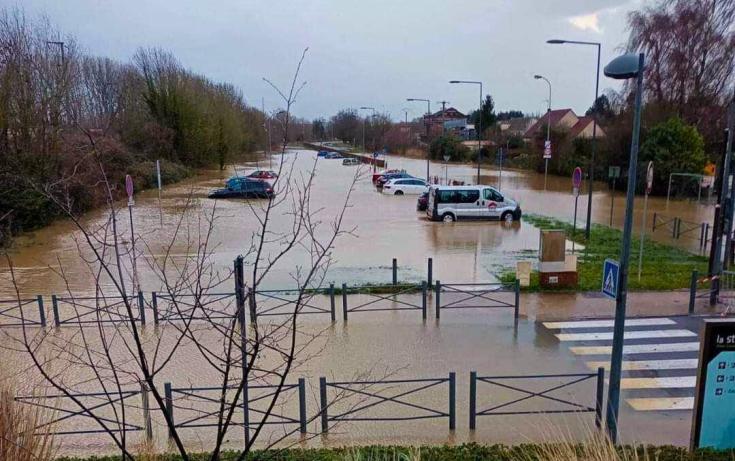Floods: Adapting to weather extremes in Europe

The frequency and severity of climate and weather extremes is increasing in Europe. In recent years, cities and regions are facing severe downpours and precipitation more frequently.
Today, floods are the most common and most costly natural disasters in Europe. They have devastating effects, endanger lives and lead to heavy economic losses. In 2021, Belgium, France, Germany, Luxemburg, and the Netherlands experienced extreme precipitation resulting in a flood that cost many lives and destroyed infrastructure such as roads, rails, bridges and buildings.
In Germany alone, the insured costs of this catastrophe are estimated at EUR 4.5 to 5.5 billion. Similar news came from Thessaly in Greece (2021), Emilia-Romagna in Italy (2023) and from Northern France where exceptional flooding caused by heavy rainfall occurred in November 2023 and January 2024. The French insurance industry estimates the related losses at EUR 550 million.
Unfortunately, these floods are no longer exceptions. The European Commission even expects higher flood risk and greater economic damage in Europe in the coming decades. This should be a wake-up call for policy makers to take urgent action that strengthens the resilience of nature and society in the face of extreme weather events. Regional and local communities in all corners of Europe need to speed up the implementation of adaptation measures and enhance integrated flood risk management.
Action required at all governance levels
The urgency is confirmed by the first European Climate Risk Assessment (EUCRA) published by the European Environment Agency (EEA) in March 2024. EUCRA identifies 36 major climate risks for Europe within five broad clusters: ecosystems, food, health, infrastructure, economy and finance. The protection of people and infrastructure against floods is right on top of the list and demands particularly urgent action.
According to the assessment, Europe is the fastest warming continent in the world but its policies and adaptation actions are not keeping pace with the rapidly growing risks. In many cases, incremental adaptation will not be sufficient and, as measures to improve climate resilience often require a long implementation time, urgent action may be needed even on risks that are not yet critical. The EEA assessment stresses that closer cooperation is key and that coordinated and urgent additional action is required at all governance levels to address climate risks in Europe.
Comprehensive adaptation actions
According to Climate-ADAPT, adaptation options are defined as strategies and measures that are available and appropriate for addressing climate change adaptation ranging from actions for knowledge creation and sharing of information, better land management planning and insurance mechanisms to adaptation actions implemented on the ground.
For adaptation measures on a large scale, the EU Strategy on Adaptation to Climate Change particularly highlights the positive effects of nature-based solutions that are readily available for implementation. Blue-green infrastructure measures such as protecting and restoring of wetlands, peatlands, coastal and marine ecosystems; promoting and sustainably managing forests and farmland will help adapt to climate change in a cost-effective way. Moreover, the Strategy argues that the use of nature-based solutions inland, including the restoration of the sponge-like function of soils, will reduce the risk of flooding.
Regions and local communities can start implementing these nature-based solutions now and take urgent action to better protect their people and infrastructure from the rapidly growing climate risk of floods.
To go further
More inspiration and information is available from the Climate ADAPT case study database and the support tools of the Interreg Europe Policy Learning Platform. You can watch the Interreg Europe webinar on ‘Climate adaption: wetland restoration’ or browse through the policy briefs ‘Nature restoration: Forest eco-systems’ and ‘Nature-based solutions for climate adaptation’ that feature many good practices and approaches that can be implemented at local level.
Project ideas on flooding
Smart flooding as a craft

Floods Risk Prevention and Resilience

Climate change adaptation

About the author
By Astrid Severin, Thematic Expert for a greener Europe at the Interreg Europe Policy Learning Platform.
Astrid is a senior expert with over 25 years of experience in regional development policies. She has a track record in circular economy, renewables, biodiversity, climate adaptation and nature-based solutions. Astrid has authored several studies and policy papers and leads the organisation and implementation of peer reviews, matchmakings and interregional policy learning events.

